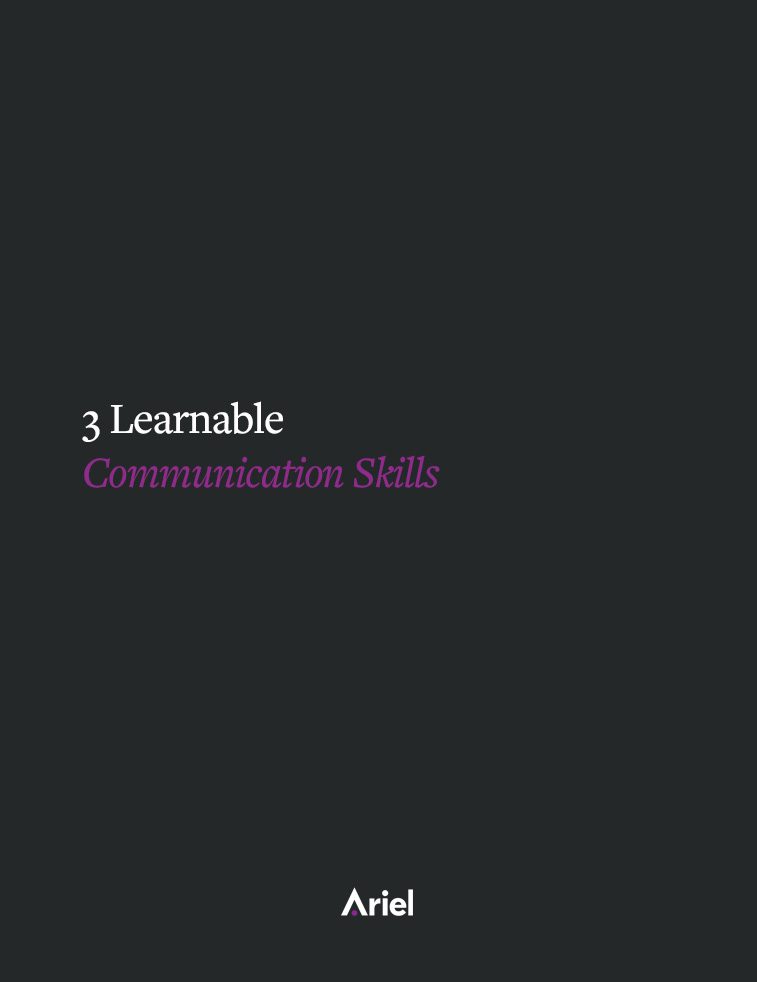Why You Need Presence to Give Remote Feedback

It’s been over a year since remote work became a regular part of the professional landscape. This means that if you haven’t already conducted a remote performance review, there’s almost certainly one on the horizon. It’s easy to assume that this will be no different from in-person reviews of the past—after all, assuming you’re both on video, you can still see and hear one another, the same as you would in person. However, subtle factors are at play that, if ignored, can impact whether you leave your report feeling invigorated and optimistic or confused and demotivated.
These factors can be identified—and overcome—using the Presence Model.
The Presence Model is a way for leaders to authentically connect with the hearts and minds of others in order to motivate and inspire them towards a desired outcome. And where is it more important to do this than in a performance review, especially one where you might need to give some tough feedback?
The Presence Model has four elements. The first two, self-knowing and reaching out, will help you to recognize shortcomings in your own perceptions before you even sit down with your report. The second two, being present and expressiveness, will enhance the way you deliver the feedback so that you communicate as effectively as possible.
Self-knowing is the ability to accept yourself, to be authentic, and to reflect your values in your decisions and actions. This is a key place to start when conducting any performance review, but especially a remote one with a team member who you perceive to be underperforming. Before you forge ahead with underperformance assessment, consider: Could you be falling prey to proximity bias? This is an insidious tendency, conscious or unconscious, of managers to believe that people working remotely are doing less or poorer-quality work just because the manager can’t see them doing the work. So take a good hard look at how you are appraising your team. Are you using objective measures to evaluate everyone’s performance, or could proximity bias be creeping in?
Reaching out is the ability to build relationships through empathy, listening, and authentic connection. The question here is: Are you reaching out and building relationships? With everyone? Are you equally present for your remote team members, or do you tend to get straight to the point in emails, text messages, and video or phone meetings without leaving time for true human connection? If you’re falling short on the human element, a remote team member’s underperformance could be the effect of feeling disengaged—which is your responsibility to fix.
Being present is the ability to be completely in the moment and flexible enough to handle the unexpected. Here is where in-person and remote feedback sessions begin to converge. Best practices in either situation, starting with listening. Be present to hear your report’s side of the story. Process and use that information to inform how you continue the review. If you still need to provide constructive criticism, try to use predominantly “I” statements so that they won’t get defensive. (After all, the goal of this interaction is to help them do better, and they can only do that if they are open to hearing and internalizing what you have to say.)
Finally, expressiveness is the ability to express feelings and emotions appropriately using words, voice, body, and face to deliver one congruent message. This alignment is important to achieve in person, but it’s even more crucial when interacting remotely and the other person can’t read subtle cues like body language as clearly (or at all, if you’re on the phone). For your message to have optimum impact, all of these features—tone, pitch, facial expressions (on video), and your actual message—need to concur.
At the end of the day, you don’t need to wait for a formal performance review to give constructive feedback using the Presence Model. Start with a self-inventory and examine how you are (or are not) reaching out: Are you being intentional about fostering relationships with remote employees? Are you avoiding having that tough conversation with a remote employee because it’s easy to put off? Then, when it’s time to give tough feedback, stay present and be expressive. The result will be a stronger, more engaged team, no matter where members are working from.
